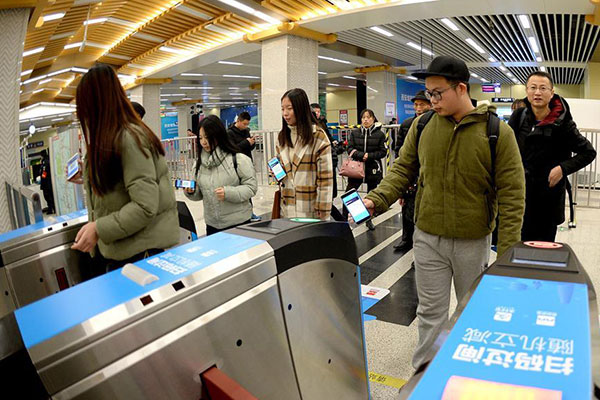
Passengers use mobile payment to take subway at the Dayanta Station of Xi’an, capital of Northwest China’s Shaanxi province, Jan 1, 2017. Passengers of Xi’an can take the subway by using the ‘Xi’an Subway’ app or scanning the QR code of Alipay since Jan 22. [Photo/Xinhua]
Recently, Shanghai metro said that it will allow QR code payment through the whole subway network since Jan 20.
Passengers can pay for their tickets via Alipay or China UnionPay simply by scanning the QR code at the entrance and exit after downloading a mobile app called “Metro Daduhui”.
Aside from Shanghai, other cities in China have also allowed QR code payment in their subway networks. Let’s take a look.
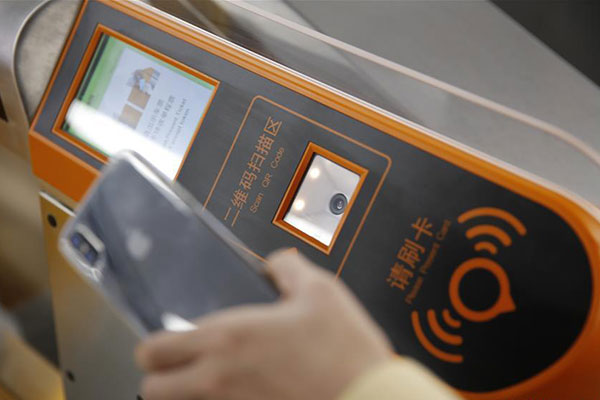
A passenger scans a QR code of mobile payment at the exit of the Huadu Moter City Subway Station in Guangzhou, capital of South China’s Guangdong province, Dec 28, 2017. Four new subway lines opened in Guangzhou on Jan 18. Guangzhou now has 13 subway lines in all, covering a total length of 390.6 km.[Photo/Xinhua]
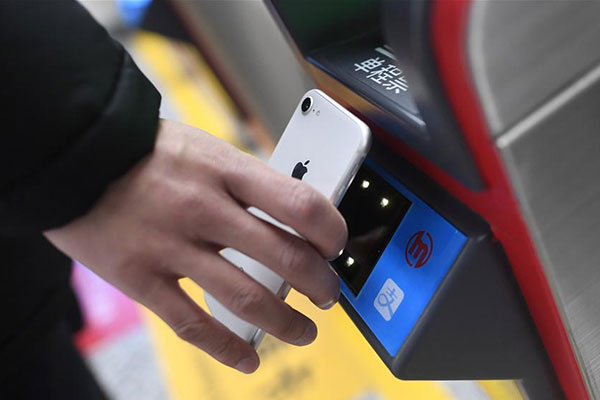
A passenger scans a QR code of Alipay, a mobile payment app, to take subway at the Fengtan Road Subway Station in Hangzhou, capital of East China’s Zhejiang province, Dec 27, 2017. Passengers in Hangzhou no longer need a ticket to take the subway. They can just swipe their smartphones, making Hangzhou the first city in China to realize mobile payments on its subway. [Photo/Xinhua]
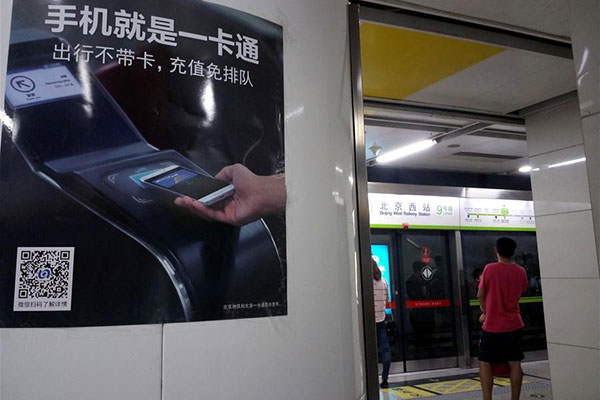
Passengers wait for the train at a metro station in Beijing, capital of China, Aug 14, 2017. Passengers can simply swipe their phones to board all of Beijing’s subway lines starting Jan 22, local authorities said. According to Beijing Subway, riders with compatible phone models may download an app to take the subway and recharge their e-tickets online. Currently, the e-tickets are limited to around 160 Android phone models with near field communication (NFC) function. [Photo/Xinhua]
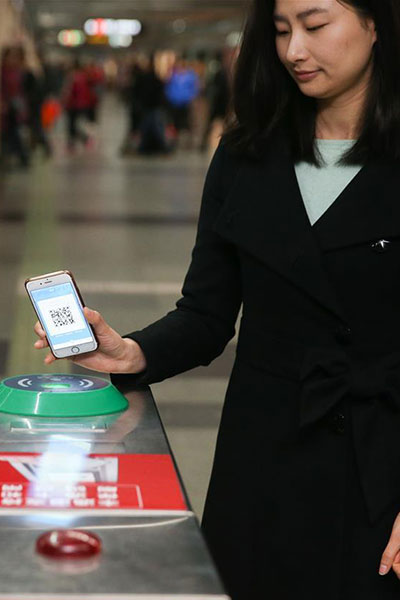
A passenger shows QR code at a metro station in East China’s Shanghai, Jan 16, 2018.[Photo/Xinhua]
